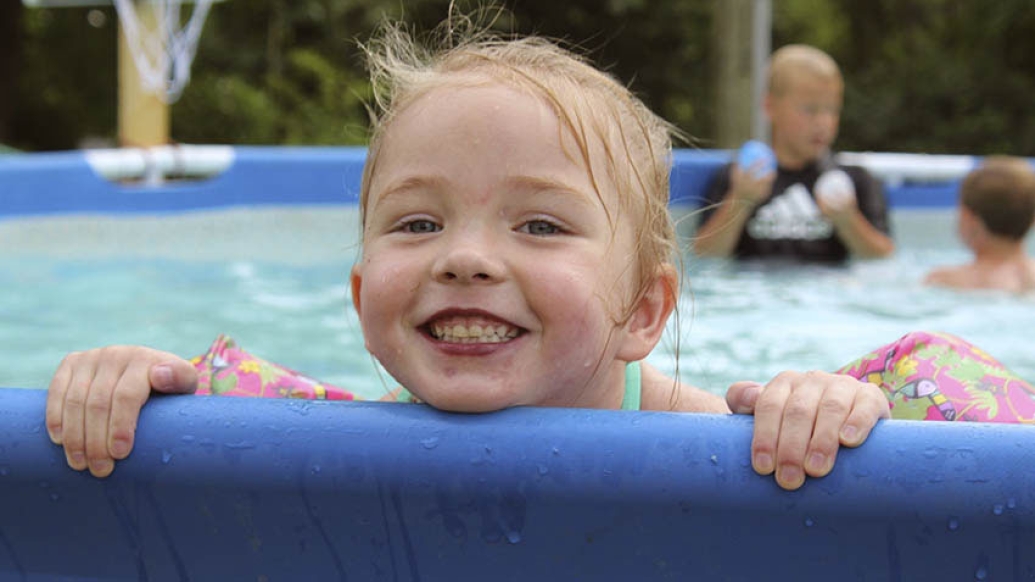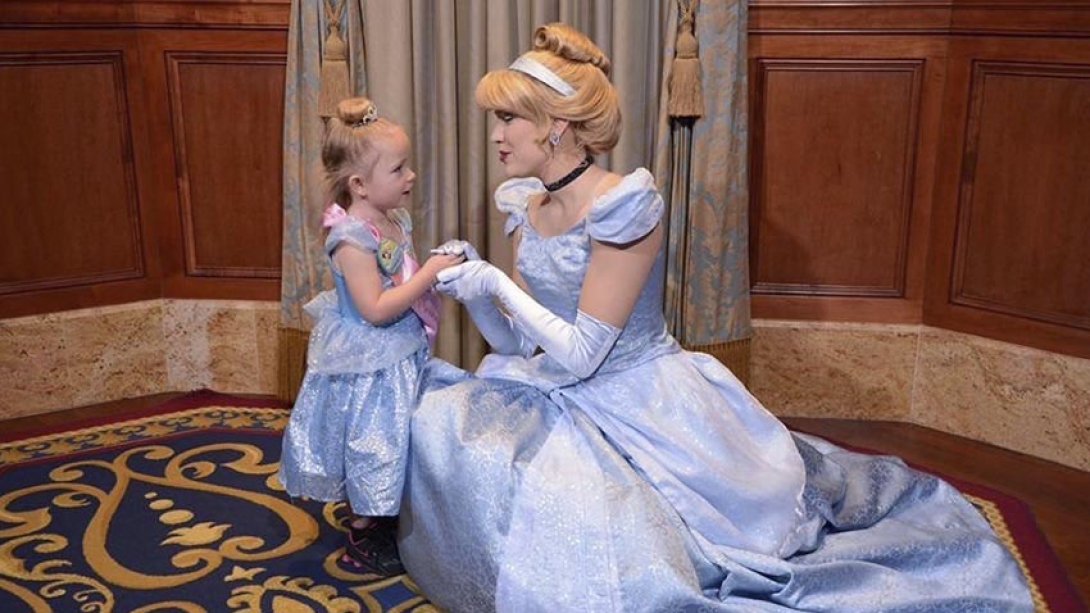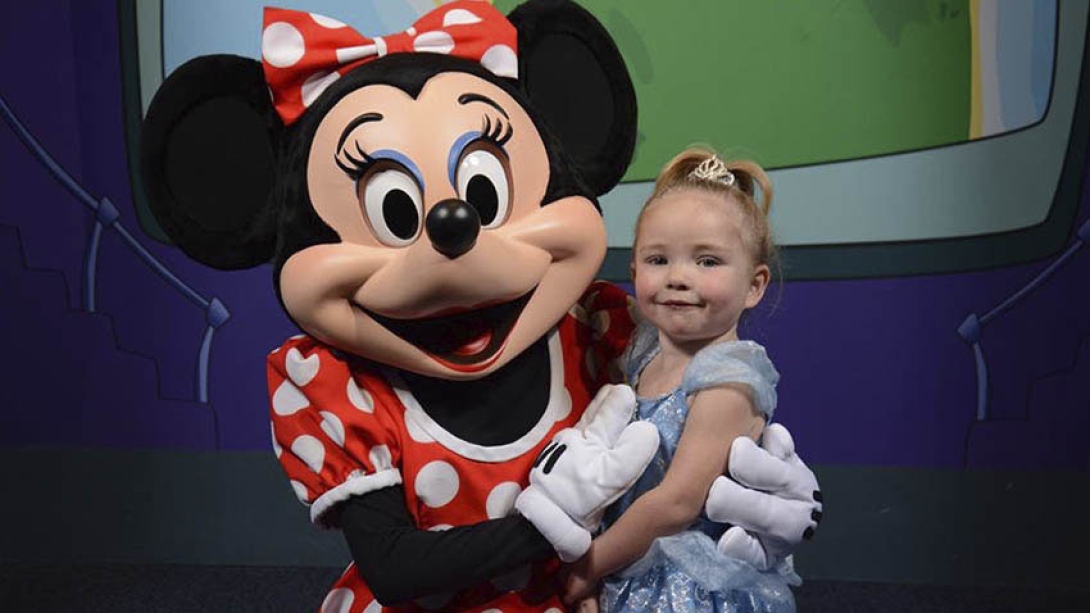A fetal diagnosis and treatment gives baby with hypoplastic left heart syndrome and her family a head start on healing – and bonding.
5:00 AM
Author |

The 20-week fetal checkup is usually filled with anticipation and excitement, but for the Ostrander family of Dundee, Michigan, it also uncovered something frightening.
"The doctors suspected that our baby's heart was not developing normally," says mom Christina Ostrander. A fetal echocardiogram confirmed the diagnosis: hypoplastic left heart syndrome with restrictive or intact atrial septum (HLHS-IAS). In HLHS, which occurs in about one in 1,000 babies born in the United States each year, the left side of the heart doesn't develop properly, leaving it unable to pump sufficient blood. The condition is further complicated when blood flow out of the lungs, into the heart and then out to the body, is compromised by a closure of an opening between the upper chambers of the heart called a restrictive or intact atrial septum.
Babies with HLHS must undergo a series of three heart surgeries beginning shortly after birth. The procedures reroute how blood is pumped to the lungs, shifting the task from the left side of the heart to the right side. The presence of an IAS makes the condition even riskier.
"Because the opening through which blood flows is constricted, pressure can build, causing the blood vessels in the lungs to develop abnormally," explains Mott pediatric cardiologist Sarah Gelehrter, M.D. "At birth, as soon as she begins breathing, the baby's oxygen levels can fall to dangerously low levels, requiring surgery immediately after delivery to resolve the problem."
When possible, this dangerous complication can be avoided by opening the blockage in utero. A multidisciplinary Mott team, led by Gelehrter, determined that the baby was a good candidate for a fetal intervention to implant an atrial septal stent.

All hands on deck
Implanting a stent in the heart of a developing fetus is a delicate process. An ultrasound-guided catheter is inserted through the mother's abdomen to her uterus, into the baby's chest wall, into the baby's heart and positioned across the wall between the upper two chambers of the heart. Through the catheter, the stent is positioned and a balloon inside it is inflated to widen the opening between the two upper chambers. The catheter is then removed, leaving the stent in the baby's heart to keep the area open. While the procedure is still relatively uncommon, the stent, which is removed during the first follow up surgery, is identical to those implanted in adults with coronary artery disease.
Like Podcasts? Add the Michigan Medicine News Break to your Alexa-enabled device or subscribe for updates on iTunes, Google Play and Stitcher.
"I had an epidural, and was awake during the procedure," recalls Christina. "Once the baby was in the right position, it seemed to take only a few minutes, but I'm sure it took longer. Alicia Valentini, the nurse practitioner who has been part of my care team from day one to today, was right there holding my hand. And I remember that there were a lot of specialists in the room."
"A high stakes, highly technical procedure like this takes tremendous coordination between specialties including maternal fetal medicine, fetal diagnostics, pediatric interventional cardiology and more," explains Gelehrter. "Everyone talks about multidisciplinary care, but a fetal cardiovascular intervention is the ultimate demonstration of it."
The C.S. Mott Children's Hospital's Prenatal Heart Program, established in 1998, is now one of the highest volume centers in the U.S. for fetal interventions, ranking in the top five worldwide for fetal cardiac procedures. Specialists who have collaborated closely for years are located in the same building, seamlessly bringing their shared experience to each challenge faced by mom and baby.
While the team had previous experience with in utero cardiac interventions for HLHS-IAS, this procedure, performed on the fetus at 30 weeks, was the first fetal atrial septal stent implant at Mott. Experts at Boston Children's Hospital developed the technique for percutaneous fetal cardiac interventions, and first trained their Mott colleagues in 2007.
The remainder of Christina's pregnancy was without complication, and Ryleigh Ostrander was born on December 16, 2013.

High-tech makes high-touch possible
One of the advantages of a fetal intervention is that it can bring some normalcy to the first hours after birth. Babies born with congenital defects are often whisked directly from the delivery room into surgery, leaving little or no time for parents and baby to bond. The Ostranders had four days with Ryleigh before her first surgery.
"We know that the early bonding period is critical for mom and baby," says Gelehrter. "From proactive fetal interventions to delivery planning to team training and parent education, we look for every safe opportunity to let babies and their parents touch and connect right after birth."
Three successful surgeries followed to reroute the blood flow in Ryleigh's heart. At four days, a Norwood surgery was performed to rebuild the heart so the right side of the heart becomes the main pumping chamber. Then a Hemi-Fontan procedure at four months to reduce the work of the right ventricle, and finally a Fontan surgery at age two so that almost all the deoxygenated blue blood coming back from the body goes to the lungs. Mott's Congenital Heart Center was among the first to achieve consistent success in the surgical treatment of HLHS.
"Ryleigh was able to go home a few weeks after the Norwood procedure," Gelehrter says. "The fetal intervention clearly made all the difference, moving her from high risk to standard risk. Based on what her heart looked like initially, her recovery has been truly amazing."
Six years later, Ryleigh continues to thrive.
"She's doing great," says Christina. "She's started kindergarten and is playing t-ball. We haven't encountered any of the issues we were told she might face, like developmental or learning delays, or lower energy levels. She can run circles around her siblings."
MORE FROM MICHIGAN: Sign up for our weekly newsletter
"We see Ryleigh in clinic about twice a year," adds Gelehrter, "and we will continue to follow her into adulthood. That's another benefit of the coordinated care we offer at Mott. Families continue to work with the same clinic team they came to know and trust before the birth, which makes the experience of living with a congenital heart condition a lot less scary."
Since the number of patients with rare conditions like HLHS-IAS is small, Mott actively participates in an international fetal cardiac patient registry to track patient experiences and share best practices.
"For example," notes Gelehrter, "very few atrial stent procedures have been performed to date. So far the data suggests that these patients seem to be doing better than those who had surgery after birth to correct the defect. As we follow them into adulthood we'll learn the challenges they'll face, and how to best care for them."
In the meantime, Ryleigh is a great source of inspiration. "She loves to show off her scar," says her mom. "She knows she's special, and she knows it's because she's strong.

Explore a variety of health care news & stories by visiting the Health Lab home page for more articles.

Department of Communication at Michigan Medicine
Want top health & research news weekly? Sign up for Health Lab’s newsletters today!





